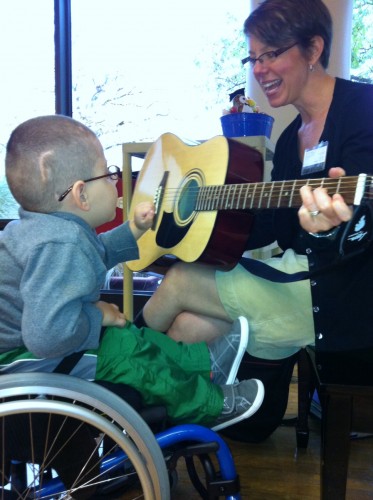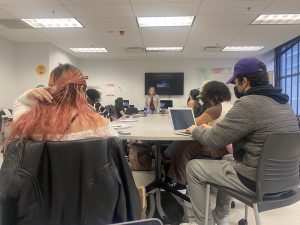Whether it’s an iTunes collection or the radio, music is everywhere. But few people know that music can be used as therapy to help with depression, recover from a car accident or with a child’s developmental disabilities.
Victoria Storm has worked as a music therapist for about 20 years and is the owner of Oak Park Music Therapy.
Storm said music therapy is used by people who have come across a rough spot in their lives and look to therapy for a “jump start to get better.”
“We turn all of the learning that our patients do in their verbal therapies and turn them into action,” Storm said. Her purpose is to teach patients how to have effective coping skills so they can get back to their regular everyday setting.
Ellen Rayfield, another Chicago-area music therapist, is the Great Lakes vice president of the American Music Therapy Association.
“Therapy is not always pleasant,” said Rayfield. “But we can use the relationship we already have with music to help people move forward.”
Rayfield and Storm attended the American Music Therapy Association’s 60th Annual Conference for the Great Lakes Region (GLR) in Columbus, Ohio, last weekend.
In music therapy, therapists use their voices and different instruments to aid patients through their struggles. Storm and Rayfield agreed that music is extremely important and unique as a tool of recovery.
“Music is an important part of who we are as human beings,” Rayfield said. “We are hard-wired for music. It affects our brain differently than other types of art, and it connects us as humans.”
This specific form of therapy is becoming a growing field.
“Music therapy allows a person to take part in a music experience, which often does not feel like therapy but more like just doing something enjoyable,” said Tracy Richardson, Great Lakes president of the AMTA.

Music therapy has been regarded as an illegitimate form of medicine by some, according to Storm and Rayfield. They said that is why they are doing all they can to inform those who doubt their work.
“The more people who can learn about how we can harness the power of music, the more people are made aware of and are open to it,” Storm said. Those who haven’t seen the benefit and power in the work don’t understand it, she explained.
She said music therapists are documenting sessions to prove there is education in the work they do.
Music therapy allows certified therapists to communicate with their patients in a unique way, they agreed. Research is being done that shows the positive physical, physiological and social effects of music therapy, said Richardson.
Not only is there reservation about music being a real form of therapy, but there has been speculation that some disorders aren’t even real in the first place, such as Post-Traumatic Stress Disorder (PTSD) of those in the military, Rayfield said. Meanwhile, many people hesitate to use the words “illness” or “disorder.”
“People use the term ‘insane asylum’ and other terrible things,” Rayfield said. “There’s still a stigma. I think it’s changing, but it’s slow.”
Storm believes the dedication of the researchers and their evidence-based practices are very important and helpful in moving music therapy forward. She provided the example of former Rep. Gabby Giffords, whose recovery from the Tucson shooting in January 2011 included music as part of helping her learn to talk again.
Rayfield said she has high hopes for the direction of music therapy as well. “I think medicine is moving toward a holistic approach to wellness,” she said. “It’s not just ‘Oh, isn’t it nice to have [music],’ but it’s something that’s going to help reach [the patient’s] full potential.”
The proof, she said, is in the patients that therapists work with on a regular basis. “Clients will sometimes engage in music when they will not engage in other therapies,” Richardson added.
Music doesn’t just help the patients, but the therapists as well. Storm says she uses the tools she teaches in her own life to get through difficult times and appreciate the good ones. Her inspiration comes from all her patients every single day, particularly ones who have physical disabilities.
“I’ve learned that life is still worth living, even if you can’t do much,” Storm said. “The joy in life comes from a positive attitude.”













Be First to Comment